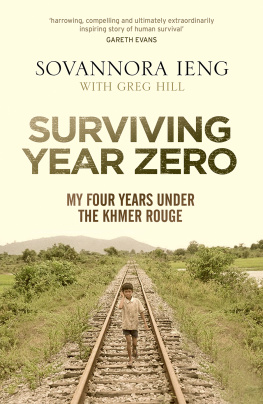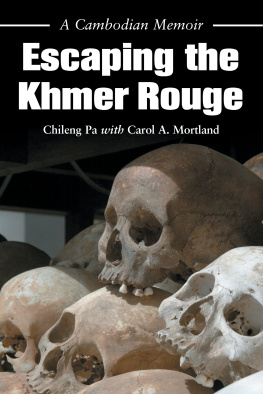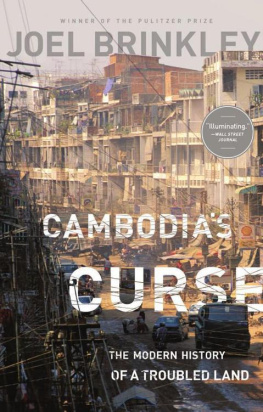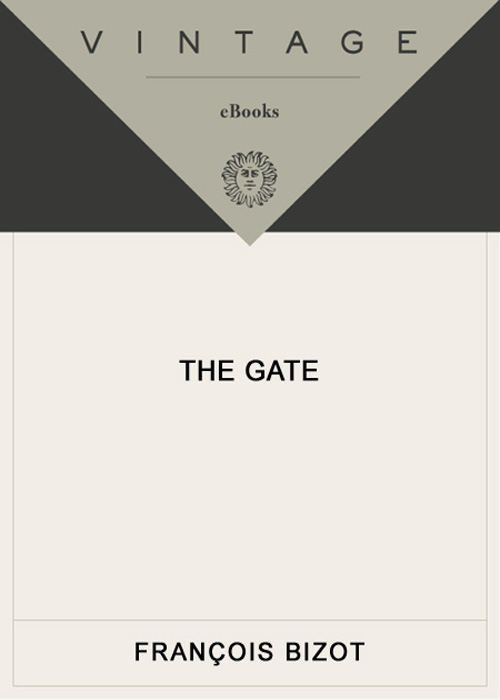
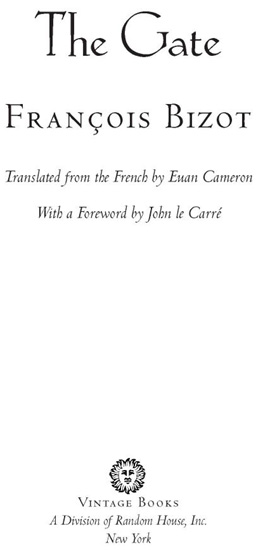
Table of Contents
To Lay and to Son
Acclaim for Franois Bizots The Gate
Unsparing.... Bizots testimony has a rawness unmitigated by time.
The New Yorker
Wrenching and haunted.... Bizot has written a classic of prisoner/escape literature. There are scenes of such dramatic power and claritythe frantic, nerve-rasping chaos as freedom lies just yards awaythat The Gate could be not unfairly called, if not categorized as, a thriller.
The San Diego Union-Tribune
A powerful, disturbing book.
The Washington Post Book World
It is hard to imagine that a better book will be written about the Cambodian killing fields. But The Gate transcends Cambodia. It rehumanizes the victims of genocide.
Newsweek
A cool, bleak, yet intensely personal account of moral, human and political catastrophes.
The Baltimore Sun
Memorably astonishing.... I have never read a book like this. It is deeply moving and ineffably terrible; every intelligent person who has a care about this world and its people should read it. Bizot has done humankind a great service.
Simon Winchester, The Sunday Times (London)
Mesmeric.... Bizot has dug further into... the darkness of the Khmer Rouge than any other contemporary.
Los Angeles Times Book Review
At once beautiful, startling, gentle, and nerve-wracking.... An extraordinary memoir.
The New York Sun
Thrilling, exquisitely observed and terrifying.... It reads like a novel and it sears both the conscience and the heart. If you only ever read one book about Cambodia, make sure it is this one.
The Sunday Telegraph (London)
The eyewitness immediacy, the extremity of the events and Bizots reflective style form a powerful descriptive cocktail.
Newsday
Bizots story, his beliefs and his dignity are deeply powerful.
Time Out New York
The Gate possesses the hallucinatory power of great fiction. Everything is in scale. It is full of haunting descriptions of the beauty of the country; it is also full of moments of moral beauty.
The Providence Journal
Far more harrowing than any novel.... Bizot leaves his readers with haunting images of the doomed.
Booklist
Chronology
195354 Cambodian independence declared. Full national sovereignty transferred to the king, Norodom Sihanouk. In Vietnam, the French are defeated at Dien Bien Phu; following the Geneva Agreements, the country is divided in two. The end of French Indochina, a colonial entity comprising Vietnam, Cambodia, and Laos.
196566 The United States sends in ground troops to protect South Vietnam from Communist invasion. The Khmer Communist movement, founded in 1951, sends a delegation to Beijing and becomes known as the Kampuchean Communist Party (KCP).
196869 American troops in South Vietnam number 550,000. U.S. air raids launched on Vietcong hideouts in Cambodia.
1969 Coup dtat on March 18, in Phnom Penh. General Lon Nol, who supports U.S. intervention, seizes power and proclaims the Khmer Republic. From Beijing, Sihanouk calls for resistance and announces the formation of the Government of the Royal National Union of Kampuchea (GRUNK). American and South Vietnamese troops infiltrate Cambodia. The Vietcong invade the territory and occupy the site of Angkor.
1973 Signing of the Paris Agreements and withdrawal of American troops. The KCP forces young peasants to enlist in the Revolutionary Army of Liberation.
1974 Start of the Khmer Rouge offensive against Phnom Penh (December).
1975 France recognizes GRUNK (April 12). On April 17, the capital falls. Evacuation of the towns and the beginning of the purification of all strata of the population. Opening of the Tuol Sleng torture camp at Phnom Penh (September 21).
1976 Sihanouk resigns as head of state. Proclamation of Democratic Kampuchea, under the presidency of Khieu Samphan; Pol Pot is prime minister. Attempted putsch at Phnom Penh. Disbanding of the pro-Vietnamese network.
1977 Kampucheas economy supported entirely by China. Diplomatic relations between Kampuchea and Vietnam broken off.
1978 Following a series of Khmer incursions into Vietnamese territory, Vietnamese divisions occupy the provinces to the east of the Mekong River.
197880 Major Vietnamese offensive (December 25, 1978); Phnom Penh captured on January 7, 1979. Government formed under Vietnamese military protection. Proclamation of the Peoples Republic of Kampuchea. Famine causes Khmer Rouge fighting units to disband, and their headquarters withdraws to Thailand. The rest of the armed forces retreat to bases in the forest and along the frontier with Thailand. Resumption of guerrilla fighting.
198593 Vietnamese troops capture several Khmer Rouge positions on the frontier with Thailand. Formal withdrawal of Vietnamese expeditionary force (1989). International peace agreement signed in Paris (1991). Numerous defections among Khmer Rouge ranks after elections organized by the United Nations.
1998 Death of Pol Pot. Collapse of the Khmer Rouge movement.
Foreword
He was always Bizot. I never knew his first name until ten years ago, when he married a beautiful Frenchwoman, who to my bewilderment called him Franois. To the rest of us, he remains Bizot, scholar, Renaissance man, and reluctant hero, with a heros stride and a poets head, an unstilled passion for life and a Faustian mission to discover what it contains at its inmost point.
I met him first in Chiang Mai in northern Thailand, at sunset, in the company of a mutual friend, in a beautiful wooden house of his own design, surrounded by enormous trees inhabited by gibbons. One of them, a great king of a fellow, had selected the crown of the tallest tree for his perch, and there he sat, with his back to the sinking sun, ruminatively masturbating in silhouette while we drank our whiskeys. The Cambodian war was not over in any meaningful sense, but the Americans had left the region, Pol Pots awful army was installed in Phnom Penh, and Bizots ordeal was behind him. He spoke of it in glancing, spontaneous references that scaled the wall of his reticence. He was prompted by our mutual friend Yvette Pierpaoli, now dead, who had known Bizot in Phnom Penh, which I had not. When I had visited Phnom Penh two years before, Bizot had been in his village at the center of the site of Angkor, where his story begins. In Phnom Penh he was merely an absent legend, fostered, tended, and adored by Yvette. So I cannot compare the brooding, volatile Bizot I met with the carefree Bizot who apparently existed in the days before the experiences he describes. I can only imagine which of the hairline cracks around the mouth and eyes, which crevices in cheek and brow, which despairing expression of hand or eye were put there by the physical and spiritual agony of his trial by endurance at the hands of his inquisitor, Douch.
Bizot has the authority of pain. It is not our fault if we have not suffered as he has. It is not his fault that he is the authentic version of what the rest of us can only imagine, though he is a big man, and a big destiny becomes him. There is pain that is perceived, and there is pain that is endured, and they are two different worlds, inhabited by creatures of two different races. We cannot choose which one we belong to. In my writing I have sometimes felt an obligation to share the pains I try to report on. Occasionallyin Cambodia or the Middle EastI have obtained some passing sense of absolution by taking risks and saying to myself afterward, Wow, that was
Next page



